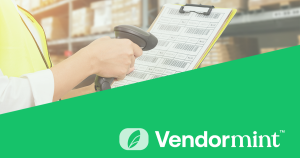What Are OS&D Deductions?
Breaking down over, short, and damaged deductions and what to do about them

If you’re a retail supplier, you’ve likely come across over, short, or damaged (OS&D) deductions. Under contractual deductions, these are the most common chargebacks you’ll see on your invoices (EDI 810 or EDI 880). Additionally, OS&D shipments can affect On Time In Full (OTIF) compliance.
What Is OS&D?
OS&D breaks down into three components:
- Overage: The shipment contained more cartons, case packs, or pallets than what the retailer requested in the purchase order (PO, also known as EDI 850 or 875).
- Shortage: The shipment contained less product than what the retailer requested on the PO.
- Damaged: There was damage to the shipment’s contents.
Over, Overage, or Over-shipped
Overages are generally rare, but you will see a chargeback because the retailer did not plan for that amount of product and may not have space for it in the store or distribution center (DC). Sometimes, the retailer will return the product to you, causing a different fine.
Walmart fines suppliers for overages as a defect according to its Supplier Quality Excellence Program (SQEP). The retailer performs random audits for overages and will issue a compliance fine for all defects found, rather than deducting it from the invoice.
Kroger defines overages as Code 7—Overage and will issue a positive amount on the remittance instead of a deduction.
Target will issue a deduction under either A037: Over-ship or A035: Return to Vendor—Not Ordered, which occurs more often when you send an incorrect item rather than more of a correct item. A037s arise when the item is overstocked at Target.
Short, Shortage, or Short-shipped
Shortages are much more common. If you’re a Walmart supplier, you will see the following codes on your invoices for short-shipped items:
- Code 21—Concealed Shortage: The DC received fewer cartons, inner pallets, or supplier packs than what was listed on the PO, called concealed due to the nature of the packaging.
- Code 22—Merchandise Billed Not Shipped: An item’s quantity on the invoice does not match the DC’s count.
- Code 24—Carton Shortage, Freight Bill Signed Short: The bill of lading (BOL) quantities do not match the proof of delivery (POD) quantities, so the DC signed the freight bill short.
- Code 25—POD, No Merchandise Received for Invoice: The DC claims it did not receive any product for the PO.
Kroger refers to all shortages with Code 4—Shortage/Damage, unless the entire shipment didn’t arrive. In that case, you will see a Code 6—Not Received.
Like Walmart, Target’s shortage deductions also fall between concealed shortages and apparent shortages. Code A030: Carton Shortage occurs when the DC’s total item count is less than what was ordered on the PO and invoiced, while Code A034: Unit or Internal Shortage occurs when there are fewer inner packs or cases on a pallet than what was ordered and invoiced.
Damage, Damages, or Damaged
Finally, accidents can happen, so a shipment’s contents might arrive damaged. Damages can occur due to mishandling by the warehouse, loading team, or unloading team, or from weather conditions that cause swelling or dampness, or at any point during the manufacturing process.
At Walmart, you’ll see a Code 93—MDSE Return, Damaged Merchandise for damaged goods returned from a customer, or Code 20—Concealed Damaged when the damage is not readily apparent. You may also see the following for carton damages:
- Code 27—Carton Damage, SL and C: occurs when the DC finds damage upon loading and counting the order
- Code 28—Carton Damage, Freight Bill Signed Damaged: occurs when the DC signs a POD or BOL stating that there is damage to the order
- Code 29—Carton Damage, Mis-Routing Changed FOB: occurs when damages happen during a misroute, and the DC changes the POD or BOL
As mentioned above, Kroger lumps shortages and damages together under Code 4—Shortage/Damage.
Target suppliers receive Code A032: Damaged or Defective deductions on invoices for the difference between the total and the cost of goods sold (COGS) damaged.
Disputing OS&D Deductions
What do you do if you see invalid OS&D fines? You can dispute OS&D deductions through your retailers’ supplier or accounting portals. Here’s what you’ll need:
- PO: You’ll need the original purchase order to match your quantities.
- Invoice: The EDI 810 or EDI 880 shows the amount you invoiced the retailer.
- Signed POD: To prove the DC received the correct amount of cartons, inners, cases, and pallets, have a signed proof of delivery with the correct quantities.
- BOL: Have the bill of lading showing that the carrier picked up the correct quantities.
Other optional documentation:
- EDI 812: A credit/debit adjustment shows the deduction amount.
- EDI 820: A payment remittance shows how much you received in contrast to what you invoiced.
- EDI 945: A warehouse shipping advice can show that the entire shipment made it through the warehouse and onto the truck.
- Email: Email communication between you and your buyer or merchant explaining the mis-ship or other circumstances beyond your control (e.g., an act of God) can prove the deduction invalid.
- Contract: Your supplier contract will have your allowances for damages and returns. If you received an invalid deduction according to the contract, this document will help prove it.
With Walmart, codes 21, 22, 24, and 25 are disputable in the Accounts Payable Dispute Portal (APDP) in Retail Link. You can dispute all deductions in Kroger’s Partner Pass portal. Finally, you can dispute Target deductions in Synergy.
You can also file complaints with your third parties should the deduction be valid. If a box fell off the truck during unloading, that’s beyond your control, but the revenue is not lost. Pass your fines onto your third-party logistics providers (3PLs), or seek new ones.
Avoiding OS&D Deductions
While invalid deductions are not always avoidable, there are things you can do to ensure they happen less frequently. Optimizing your supply chain and maintaining proper documentation are crucial for avoiding overages, shortages, damages, and invalid chargebacks.
Implementing standard operating procedures (SOPs) and frequently auditing your 3PLs can also reduce inefficiencies in your supply chain. Maintain high standards and communicate them to everyone to ensure they stay on track. Ready to learn more? Read 8 Foundational Steps to Reduce Retail Deductions Effectively.
Are You Leaving Money on the Table with Invalid Deductions?
You can recover 3–8% of lost revenue from invalid chargebacks and deductions! Schedule a free audit of your deductions today and see how you can win big with Vendormint™.
More Posts

Holiday Deduction Management & Retail Compliance
Expert Strategies for Retail Dispute Management, Deduction Management, Retail Compliance, and Supply Chain Optimization

Avoiding Costly Mistakes: A Deep Dive into Compliance & Dispute Management with Major Retailers
Expert Strategies for Retail Dispute Management, Deduction Management, Retail Compliance, and Supply Chain Optimization

Walmart Profitability and Growth: Strategies for Suppliers in Uncertain Times
In today’s retail environment, consumer packaged goods (CPG) brands face mounting pressure from tariffs, compliance fines, operational inefficiencies, and increasingly complex relationships with major retailers like Walmart.

The Walmart Supplier Quality Excellence Program (SQEP)
The Walmart Supplier Quality Excellence Program (SQEP) provides standards for a “defect-free” supply chain. Learn more about this retail supplier KPI.
When you realize
you're missing out
on all the insider info
Get in on the action and join the VendorWorld™ Newsletter—stay up-to-date with industry tips, tricks, and the latest trends.




